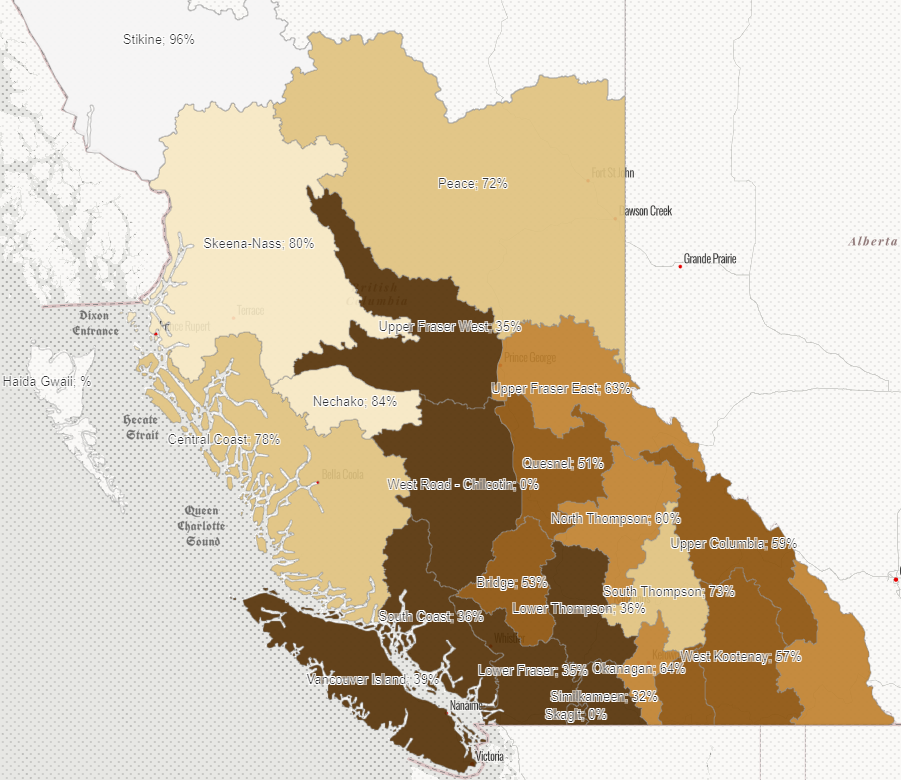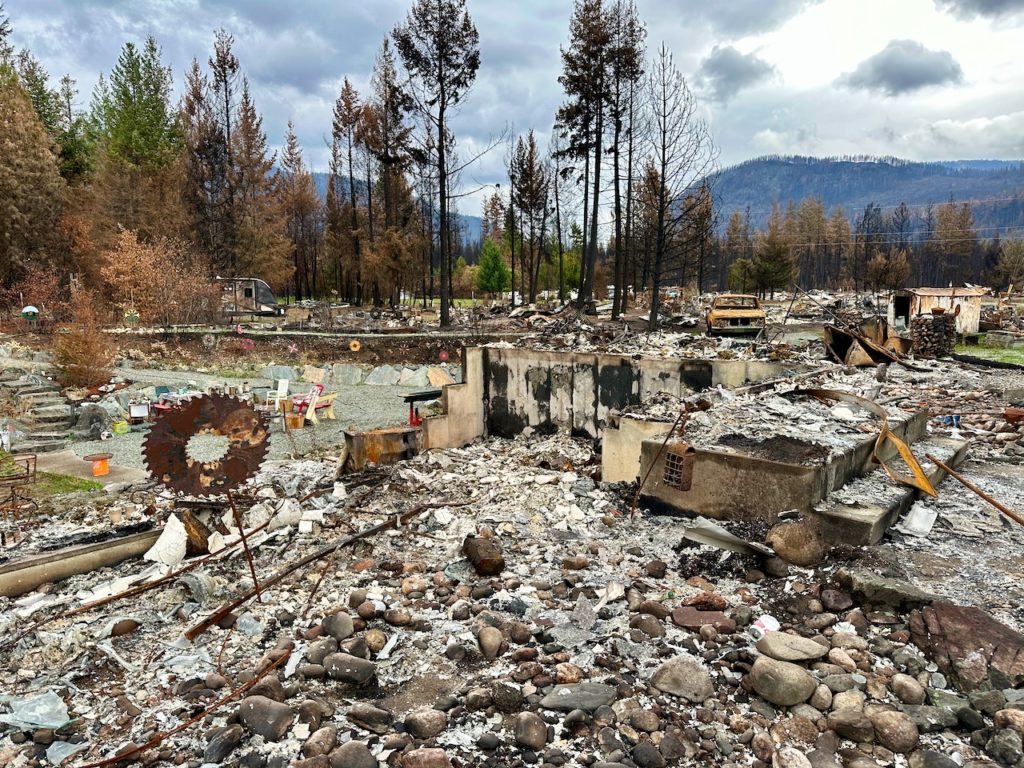
The beloved hills behind our home in Lee Creek where we hike most days in the winter would normally now be a delightful scene filled with green conifer trees and snow, but since the firestorm it is a stark, black and white dystopian landscape filled with burnt trees that will be there for years to come. In the spring, whatever snow accumulates this winter will melt off quickly with the increased chance that there could be landslides.
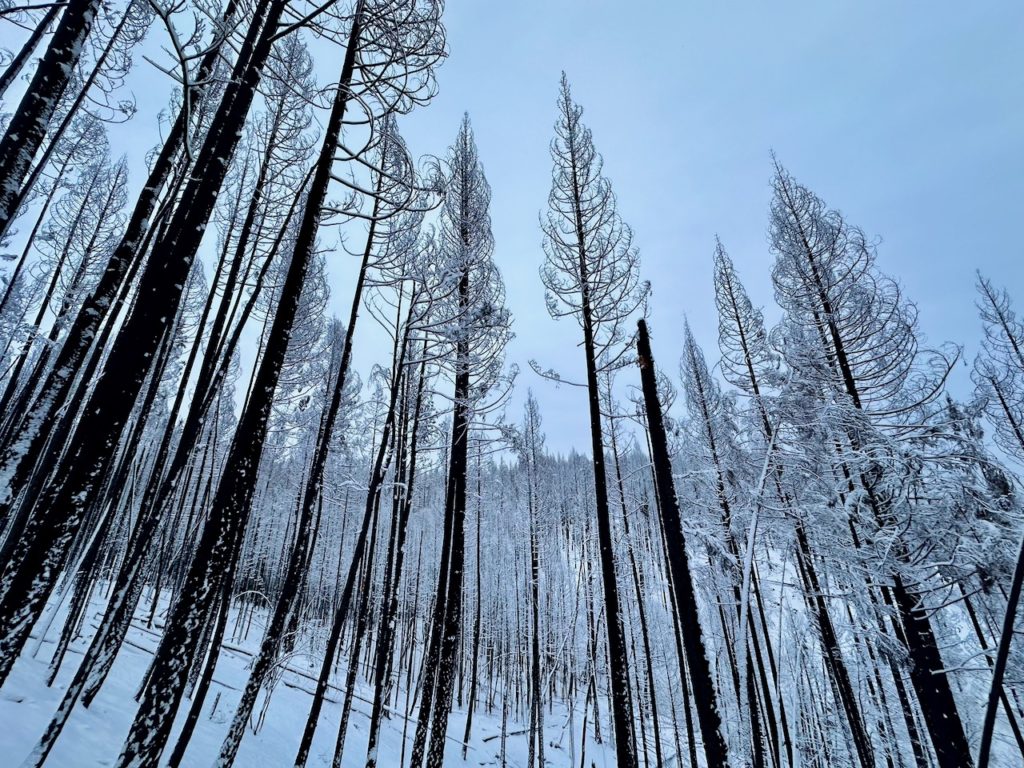
Last year’s firestorm was the worst disaster to ever hit the Shuswap and it could well be the most devastating B.C. wildfire in recent history, given that more structures burned here than ever before, and the fire destroyed nearly 80 percent of the world-class Tsútswecew Provincial Park, home to one of the largest salmon runs in the province.
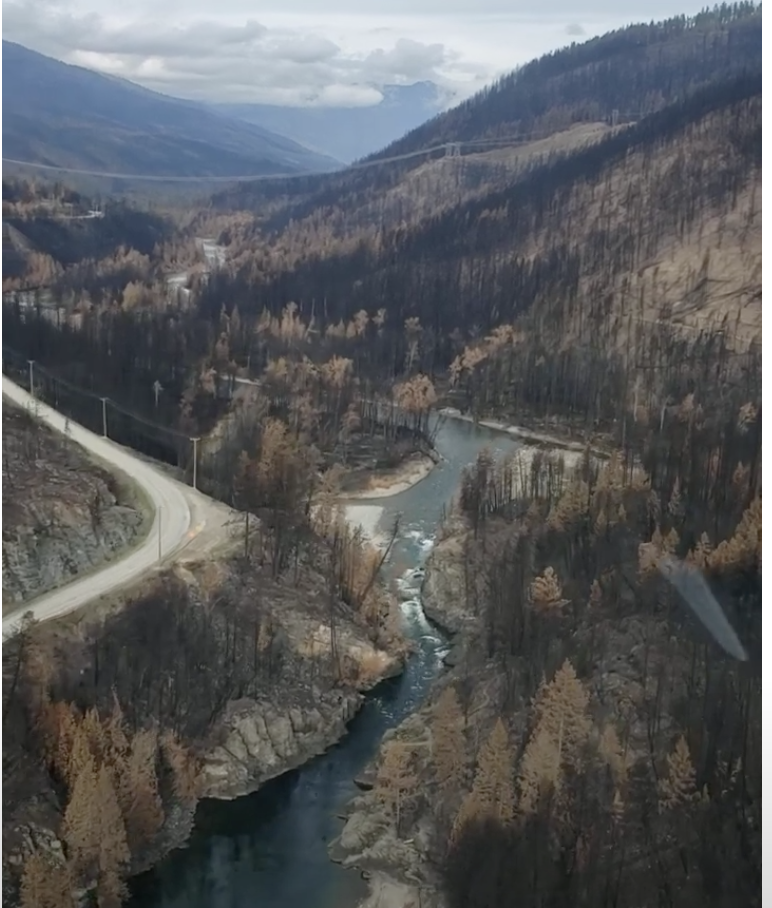
Just like many wildfires in recent years, the Shuswap Firestorm could have been prevented if more resources had been used effectively in the first few days. As well, there would have been far less damage, if there had not been the reckless use of an aerial ignition to backburn over two thousand hectares of forest just before a major windstorm.
The latest news about the backburn comes from a recent Globe and Mail investigative report. A few days after the firestorm, the B.C. Government Employee’s Union wrote to the Forests Minister Bruce Ralston with concerns about how the ignition was handled and asked the forest service to work with the union on a joint investigation, given that their members were at risk. Prior to this letter being sent, WorkSafe BC had already begun an investigation. As well, a crew of five Brazilian firefighters were trapped in a vehicle at the powerline for three hours as the out-of-control burn raged around them.
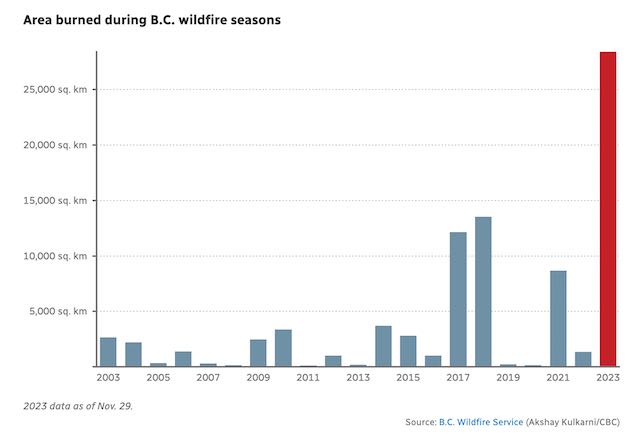
Last year, wildfires burned over 2.8 million hectares of forest, more than double that of the previous most extreme year in 2017. Renowned author John Vaillant’s latest book, Fire Weather, describes the apocalyptic firestorm that nearly destroyed Fort McMurray, which ironically is the centre for one of the world’s dirtiest fossil fuels that is a major contributor to the rapidly warming climate. In a recent Maclean’s editorial, Vaillant points out how 2023 was the warmest year to date, over 18 million hectares of forest burned in Canada, storms ravaged many countries and that we can only expect fires to become larger, hotter, and more destructive.
Critics of the B.C. Wildfire Service with decades of firefighting experience point out how recent large wildfires could have been put out early if adequate resources had been used for the initial attack, including air tankers, water skimmer aircraft, and local contractors who work in the area and have the appropriate know-how and equipment to fight fires successfully. Instead, fires are often monitored rather than actioned and thus when the weather conditions create windstorms, these fires move long distances in short time periods and destroy communities.
Local contractors often do end up working on wildfires after they become too large for the wildfire service to control, however stories abound about mismanagement. One local skidder operator was contracted to work on the Bush Creek blaze with a large water tank, but he reported that most of time he was paid to stand by rather than to action the fire. Another contractor helped build fire guards, but there was never any water used and at night the fire would blow over the guard, forcing him to build a new one. An often-heard complaint was that precious time was wasted every morning with safety meetings and crews did not get to work until after 10 am and by that time the fire was too hot to control.
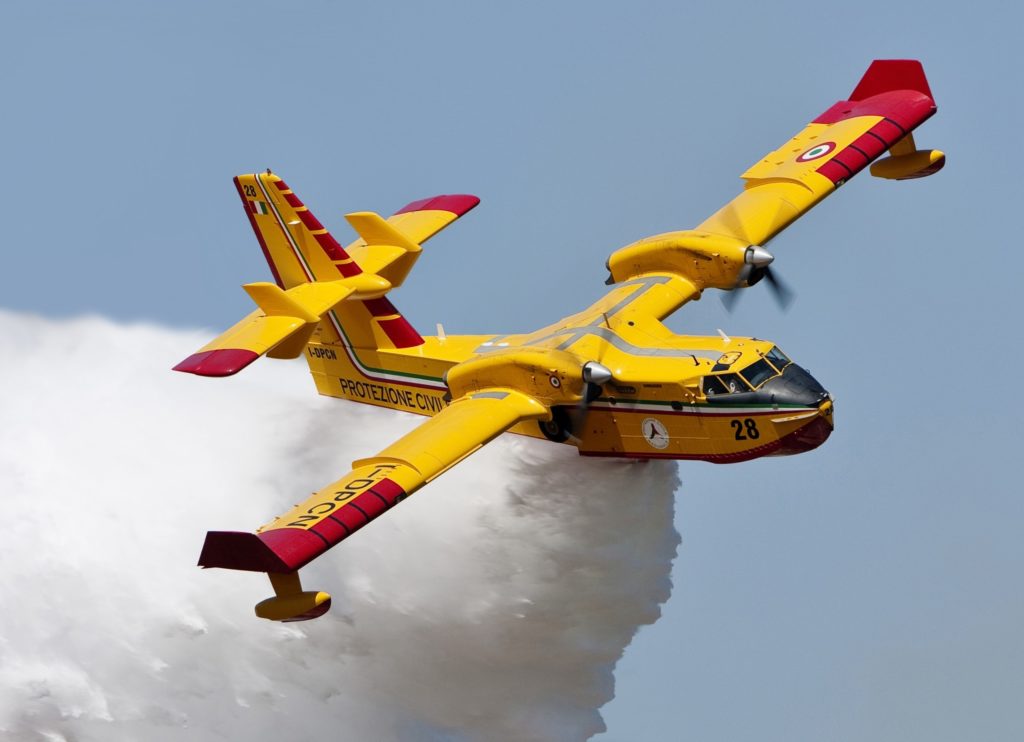
Another concern is that BCWS is depending increasingly on crews from out of province who have limited knowledge or experience working in mountainous regions. As well, because of the high turnover of staff, inexperienced people are often given management positions.
The Shuswap Firestorm should be a wake-up call for the province. Given the rapidly warming climate, the persistent drought conditions, and the increase in dead and dying trees in the forests, B.C. citizens need to demand an overhaul of the BC Wildfire Service so that it is better equipped and better managed to prevent more firestorms and more devastation. As well, every rural community needs to do more fire smart work to protect homes and livelihoods.
You can help create the changes needed to protect communities from future wildfires by signing this petition: Here
POSTSCRIPT
The 2023 wildfire season should also be the last straw for all B.C. citizens, as most had to endure the smoke filled air that poisons us all and reduces our life spans. Additionally, this year’s wildfires in Canada added twice as much carbon to the atmosphere than from all other sources. By allowing fires to grow to unmanageable sizes, BCWS is creating a vast, immense climate chaos feedback loop that will further heat the planet resulting in yet more fires as the forests heat up and dry out. While it is true that more prescribed burning is needed to reduce fuel loads in the forests, those burns need to occur in the spring or fall when the forests are damp.
All predictions point to more intense drought and heat this coming summer, as the current drought mapping shows. Thus, it is imperative that the BC government take action to reform how wildfires are managed or else we will face more smoke, more burnt forests, more devastated communities, more carbon into the atmosphere and more fire damage this summer.
